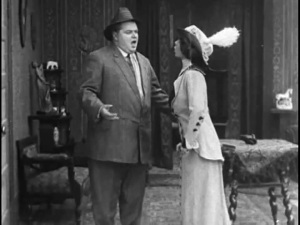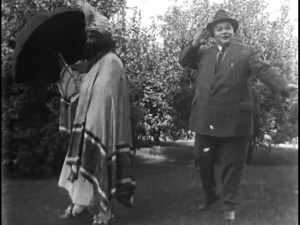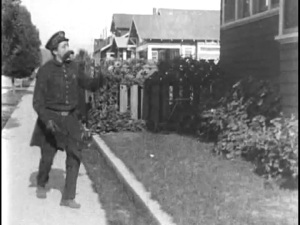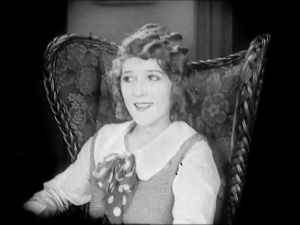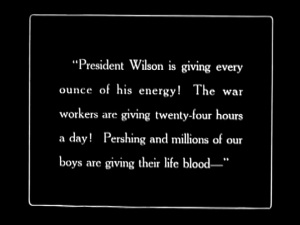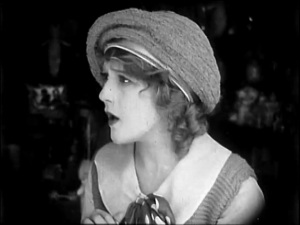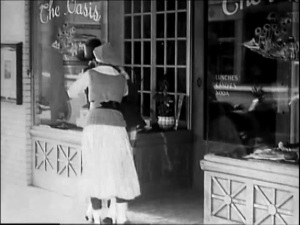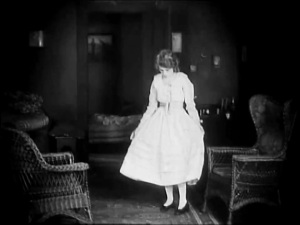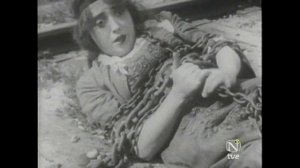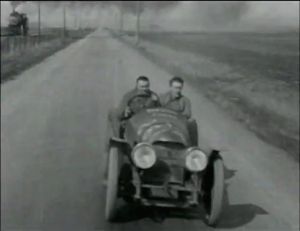Revered, controversial, famous and complex,
American filmmaker David Llewelyn Wark Griffith (January 22, 1875 – July 23,
1948) had an undeniable influence in early cinema and his name is familiar to
anyone who has studied cinema at an academic level and even people who are not
very familiar with earlier cinema. Many great actors and actresses blossomed
under his tutelage, including Lillian Gish and Mary Pickford. Loved and hated,
nobody could ever imagine that a struggling actor who started his cinematic
career at American Mutoscope and Biograph Company in 1908 would reach such
mythical heights at his own lifetime.
Being known for feature films such
as The Birth of a Nation (1915) and Intolerance (1916), the short films he
directed at the beginning of his career are sometimes overlooked. Although they
are clearly not as lavish and elaborate as his feature films, they represent
valuable tools to understand Griffith’s style, especially when it comes to
storytelling. Then we can see and assess his style in its pure form, without
many resources but with careful production.
Before describing the plot of the
film, you should forget about naturalistic actresses such as Lillian Gish, Mary
Pickford and Mae Marsh. The Gish sisters would not enter films for a couple
years. Mary was beginning her cinematic career at that studio in 1909, but is
not in this film, Mae wasn’t in Biograph yet either. Acting here is much more
stagey and exaggerated, particularly when it comes to women. It was
Victorian-era acting in its final breath.
This film has a quite touching story, that
retains its appeal regardless of time and place. This is early 20th
century, United States, but it could have happened even before that or nowadays
and in virtually all corners of the world.
The father of the family is unemployed and the
whole family is in a quite bad financial situation. Both husband and wife are
despondent. As an intertitle says, the father is “crushed in spirit” and then
he finds comfort in drinking. In addition to drinking, he also attended bars
with other men who looked quite tough, which were definitely not appropriate
places for a family head and father. After a while, he returns to his home
entirely drunk, which only increases the despair of his wife and two children
(a boy and a girl).
After a particularly stressful argument, the father leaves
“the house of sorrow”, an euphemism that means he abandoned his family. Anyway,
euphemisms apart, it becomes 100% clear that he was leaving his family out of
shame because he left a note to his wife before going away, claiming they would
be better without him. But considering that the husband was usually the
family's sole breadwinner in the early 20th century, his departure was a
dreadful shadow over the future of the family he left behind. How the wife
would support her children, then? After reading the note, the woman gets
understandably desperate, throws herself on a chair and nearly faints, which
was typical melodramatic acting of that time.
After leaving his family, the husband's
alcoholism probably worsened, unsurprisingly. One day, the wife goes to the
city with her daughter, leaving her son alone at home, trying to find a job.
Unfortunately, she wasn’t successful. While the boy was alone at home, he found
some food and ate it. It was probably the last food the whole family had to
fall back on and when the mother arrives back home with her little daughter and
finds it out, she gets very sad.
Anyway, divine providence exists and God helps
the ones who suffer and one of the wife’s aunts left her a good inheritance.
The woman becomes wealthy and all her troubles are solved and she moves with
her children to a fine house. Unfortunately she still doesn’t know the
whereabouts of her husband.
So it comes the night before Christmas. In an
interesting plot twist, it is said in an intertitle that “There is no chimney,
so Santa Claus will come through the window”. The children don’t want to sleep,
they want to see Santa Claus but, with some effort, the mother made them to
pray and go to the bed. But the children get to run away from bed after a short
time and they set a trap for poor Santa. As a matter of fact, the mother is
going to dress up as Santa Claus.
While it all happened inside the house, we
can see the father nearby and he was forced to “desperate deeds”. In other
words, not having any job and having a drinking habit, his only option was
robbery and he attempts to burglarize a house. It was the house where his wife
and children were living. After he enters through the window, the husband is
immediately caught red-handed by his wife. She recognizes him, starts
overacting like crazy and the husband wonders what on Earth is she doing in
that sophisticated house.
The woman realizes her husband has become a petty
criminal and the man, out of shame, begs his wife to forgive him and also
starts overacting as much and she does. He tries to run away, but the wife begs
him not to. His family is wealthy now and he doesn’t need to steal anymore.
They both hug and reconcile.
Then the wife has the idea of the husband making a
surprise to his children by dressing up as Santa Claus. After he is dressed up,
the wife calls the children to see Santa and everybody gets very happy. It’s
Christmas and family is united again.
According to Kevin Brownlow[1],
some of the characteristics of D.W. Griffith’s films (which in my opinion can
all be seen in this film in a way or another) are the following ones:
- The use of melodrama amid settings of complete reality;
- The exaggerated, yet still truthful characters;
- The fascination with detail;
- The accuracy of dress and behavior;
- The sentimentality;
- The attitude toward religion;
- The outrage over social injustice.
And you, dear reader? After reading this
article, do you see any of those aforementioned characteristics in the film?
Only some of them? None of all? Feel free to leave a comment and say what you
think.
[1] The Parade Has Gone by, Kevin
Brownlow, University of California Press, 1968, first edition, reprinted by
permission

+028.jpg)
+140.jpg)
+253.jpg)
+344.jpg)
+398.jpg)
+423.jpg)
+029.jpg)
+038.jpg)
+060.jpg)
+151.jpg)
+347.jpg)
+466.jpg)












+085.jpg)
+090.jpg)
+421.jpg)
+457.jpg)
